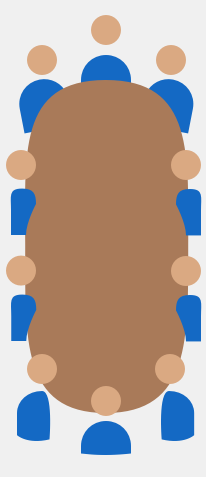Are You Ready For BRIMO?

10 candidates participate for BRIMO (Brilliant Members Olympiad), which is organized around a table. There are 5 versions of the test, and each candidate will receive exactly 1 version. To avoid cheating, no two candidates that sit next to each other will receive the same version of the test.
In how many ways can we distribute the tests?
The answer is 1048580.
This section requires Javascript.
You are seeing this because something didn't load right. We suggest you, (a) try
refreshing the page, (b) enabling javascript if it is disabled on your browser and,
finally, (c)
loading the
non-javascript version of this page
. We're sorry about the hassle.
1 solution
It would be slightly clearer to present the argument as a direct count, instead of the probabilistic approach. Let Q n and P n be the number of paths of length n that lead back to the origin and don't lead back respectively. Then we have Q n = 4 × P n − 1 and P n = 3 P n − 1 + 4 Q n − 1 .
(The upper problem is similar to this problem )
Suppose there is a pentagon with all its diagonals drawn. A bug stands at any vertices. We'll calculate how many ways there are for the bug to walk on the edges 9 times such that, it doesn't come back when finished.
Denote P n be the probability that the bug stands at the starting position after n times walking.
The bug will be at the starting position after n + 1 times walking only if these conditions follow:
It wasn't at the starting position after n times walking (with probability of 1 − P n ).
It chooses to go back to the starting position (with probability of 4 1 ).
Hence, we have this recursive formula P n + 1 = 4 1 ( 1 − P n ) .
With P 0 = 1 , P 1 = 0 , we can calculate to have P 9 = 6 5 5 3 6 1 3 1 0 7 .
But P n is the probability that the bug stands at the starting position, so the probability that it doesn't stand at this vertice after 9 times is: 1 − P 9 = 6 5 5 3 6 5 2 4 2 9
There are 5 ways for the bug to choose the starting vertice, for each time it walks, there are 4 ways to choose the next destination, so the answer would be: 5 × 4 9 × ( 1 − P 9 ) = 1 0 4 8 5 8 0